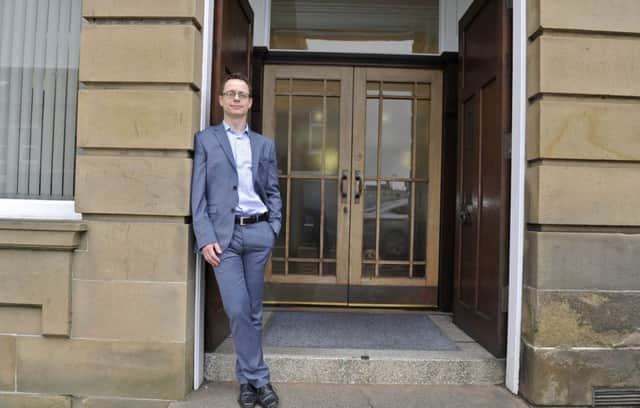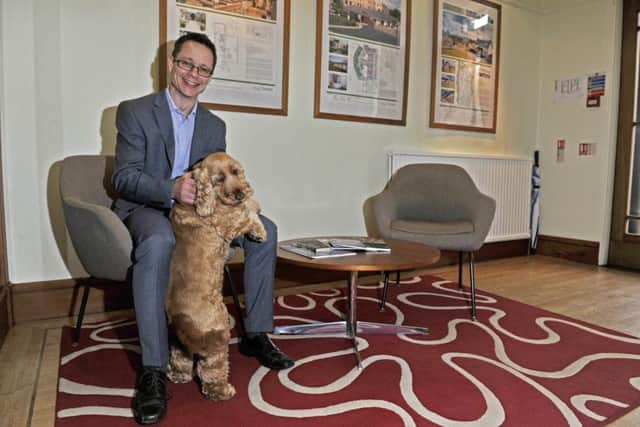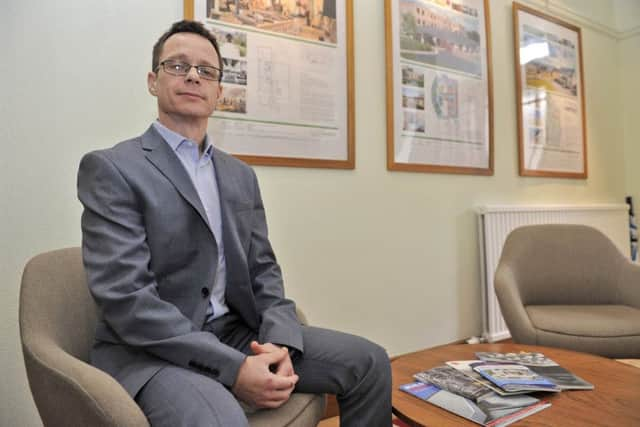Gala architect gives light to dementia sufferers


David Burgher, director of Aitken Turnbull Architects, invented the system, known as a Virtual Reality Empathy Platform (VR-EP), to give designers and architects an idea of how dementia sufferers view their surroundings.
It is understood that dementia suffers see objects less obvious and much dimmer so by using this technology, it is hoped that designers can reduce the anxiety and number of accidents such as falls by improving the contrast and signage within spaces.
Advertisement
Hide AdAdvertisement
Hide AdForty-six-year-old Mr Burgher, of Kelso, developed his invention in partnership with Glasgow-based computer graphics company Wireframe Immersive and experts at the Hammond Care dementia charity.


He said: “We got the product fully supported by Scotland Enterprise and launched it on the Tuesday. By the Wednesday there had been more than a million tweets about it.
“There is a commercial opportunity, but we are really seeing it as a possibility to make a difference.
“There is no cure for the disease, but we can try and help to improve the quality of life. There is no reason why we can’t design buildings to be suitable.”
Advertisement
Hide AdAdvertisement
Hide AdAs some estimates suggest that dementia costs the UK economy £26.3bn a year, the device is expected to also help reduce the costs paid by healthcare providers by designing buildings with dementia in mind.


The architect, who trained at Robert Gordon’s University in Aberdeen, came up with the invention as a means to tackle the Borders’ “increasingly challenging demographic”. He said that the firm, established in 1887, has worked on dementia on numerous occasions.
He said: “It was through frustration that I thought there must be a way of seeing what the patient is seeing. If you put yourself in the mind of the user you can better understand their requirements.”
The VR-EP includes a laptop with a high performance graphic and memory capability, virtual reality goggles, a games controller, camera and bespoke software programming.
Advertisement
Hide AdAdvertisement
Hide AdKevin Gordon, business development manager at Wireframe Immersive said: “VR-EP is leading edge technology being developed by Scottish companies and a fantastic example of how virtual reality can be used to improve quality of life.


“The scale of dementia and its associated costs is colossal, not just in the UK but across the globe. VR-EP also has the potential to be adapted to simulate other sensory impairments and be used across a spectrum of disorders, so its potential is enormous.”
Professor Mary Marshall, senior consultant at the Hammond Care Dementia Centre’s UK team said: “One of the biggest challenges for researchers, trainers and consultants in dementia design, is how you convey the experience of the environment for people living with dementia. This device has the potential to be immensely beneficial for researchers, commissioners, architects and interior designers, and many other professionals in this field, and the Dementia Centre, Hammond Care are delighted to be part of it.”
The developers are now looking into exporting it.